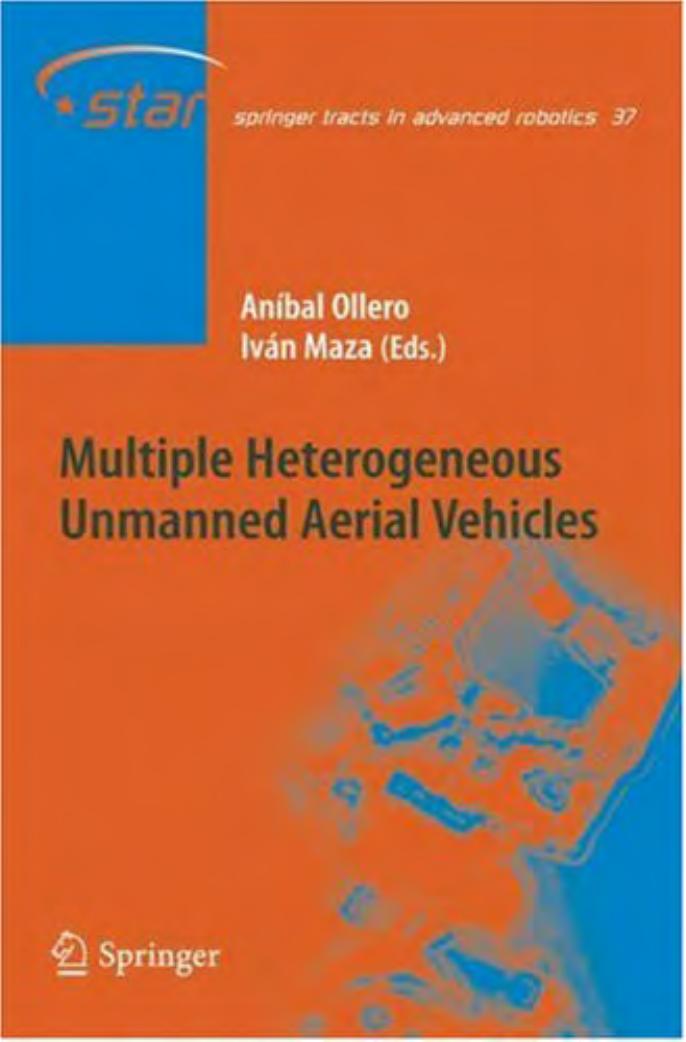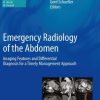Multiple Heterogeneous Unmanned Aerial Vehicles 1st Edition by Aníbal Ollero, Iván Maza ISBN 9783540739586 3540739580
$70.00 Original price was: $70.00.$35.00Current price is: $35.00.
Instant download Multiple Heterogeneous Unmanned Aerial Vehicles (Springer Tracts in Advanced Robotics) Wei Zhi after payment
Multiple Heterogeneous Unmanned Aerial Vehicles 1st Edition by Aníbal Ollero, Iván Maza – Ebook PDF Instant Download/Delivery: 9783540739586 ,3540739580
Full dowload Multiple Heterogeneous Unmanned Aerial Vehicles 1st Edition after payment

Product details:
ISBN 10: 3540739580
ISBN 13: 9783540739586
Author: Aníbal Ollero, Iván Maza
Complete with online files and updates, this cutting-edge text looks at the next generation of unmanned flying machines. Aerial robots can be considered as an evolution of the Unmanned Aerial Vehicles (UAVs). This book provides a complete overview of all the issues related to aerial robotics, addressing problems ranging from flight control to terrain perception and mission planning and execution. The major challenges and potentials of heterogeneous UAVs are comprehensively explored.
Multiple Heterogeneous Unmanned Aerial Vehicles 1st EditionTable of contents:
Contents
List of Contributors
Introduction
- Aerial Robotics
- Multi-UAV Systems
- Applications
- Aerial Photography and Cinematography
- Aerial Mapping
- Meteorology
- Environmental Monitoring
- Agriculture and Forestry
- Inspection
- Law Enforcement and Security Applications
- Disasters and Crisis Management
- Fire Fighting
- Traffic Surveillance
- Communications
- Civil Engineering
- Conclusions and Outline of the Book
- References
- Decision Making in Multi-UAVs Systems: Architecture and Algorithms
- Introduction
- UAV Architecture
- A Taxonomy of Decisional Autonomy Capabilities
- Decisional Architecture
- Execution Control
- General Task Model and Assumptions
- Executive’s Mechanisms
- Illustration
- Multi-UAV Distributed Mission-Planning
- General Considerations Related to the Planning Scheme
- Exploiting the Specialized Refiners During the Planning Process
- The Specialized Refiners Toolbox: Overview
- Illustration
- Distributed Task Allocation
- Contract-Net with Equity
- Time-Constrained Tasks in a Distributed Environment
- Summary
- References
- Communication
Introduction
- Requirements
- Design Idea
- Data Organization
- Network
- Blackboard
- Routing
- Network Layers
- Network Setup
- Design Details
- User View
- Conditioning of Slot Contents
- Data Transmission
- Physical Links
- Implementation Details
- Core Architecture
- Cross Platform Support
- Support for Embedded Systems
- Implemented Physical Abstraction Layers
- Memory Efficiency
- Code Example
- Real Scenario
- Network Topology in COMETS
- Transportation and Physical Layers
- Information Flow
- Conclusion
- References
- Multi-UAV Cooperative Perception Techniques
- Introduction
- Main Issues
- Approach and Outline
- Related Work
- Probabilistic Algorithms for Cooperative Perception
- Multi-robot Perception
- Semi-decentralized Belief Computation
- Decentralized Cooperative Perception
- Developing Cooperative Perception Actions
- Vision-Based Object Detection, Localization and Tracking with Multiple UAVs
- Initial Assumptions
- Event State Definition
- The Likelihood Function for Vision
- Local UAV Image Processing Techniques
- Image Motion Estimation
- Blob Features
- Image Stabilization
- Information Filter-Based Multi-UAV Detection and Localization Using Vision
- Multi-robot Perception Employing Information Filters
- Decentralized Information Filter for Object Detection and Localization
- Results
- Grid-Based Multi-UAV Detection and Localization Using Vision and Other Sensors
- Local Filter
- Distributed Filter in the Multi-robot Case
- Grid-Based Detection and Localization of Events
- Conclusions
- References
- Autonomous Helicopters
- Autonomous Helicopters Overview
- General Issues on Autonomous Helicopters and Control Architectures
- The MARVIN Autonomous Helicopter System
- Helicopter Model
- Coordinate Systems
- Helicopter State
- Physics of Motion
- Forces and Torques
- Aerodynamics of a Rotor
- Simulation Results
- Control Techniques
- MARVIN Controller
- Additional Control Techniques for MARVIN
- Conclusions
- References
- Airship Control
Introduction
- Airship Modeling
- Frames and Kinematic Model
- Dynamic Model
- Simplified Model
- Model Identification
- Estimation of the Aerodynamic Parameters
- Analysis of the Validity of the Reduced Models
- Control
- PID Control
- Generalized Predictive Control
- Non-linear Control by Extended Linearization (ELC)
- Experimental Results
- Path Planning and Following
- Path Planning
- Path Following
- Conclusion
- References
- Teleoperation Tools
- Introduction
- Technology Trends in UAV Teleoperation
- The Need of Multimodal Interfaces
- Augmented Reality and Synthetic Images
- Teleoperated Helicopter in COMETS
- Hardware Elements
- Software Elements
- Experimental Results and Mission Execution
- Mission Execution
- Conclusions
- References
- Multi-UAV Experiments: Application to Forest Fires
- Introduction and Motivation
- A Multi-UAV System for Forest Fire Applications
- Descriptions of the UAVs
- Sensors of the Fleet
- Fire Segmentation
- General Description of the Mission
- Multi-UAV Surveillance and Fire Alarm Detection
- Cooperative Alarm Confirmation
- Fire Observation and Monitoring Using an UAV
- Cooperative Fire Monitoring
- Conclusions
- References
- Conclusions and Future Directions
- Author Index
People also search for Multiple Heterogeneous Unmanned Aerial Vehicles 1st Edition:
different types of unmanned aerial vehicles
unmanned aerial vehicle examples
unmanned vehicles examples
unmanned aerial vehicle technology
examples of unmanned aerial vehicles


